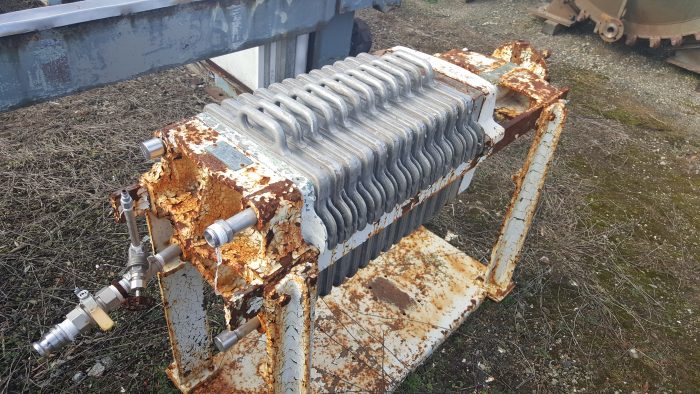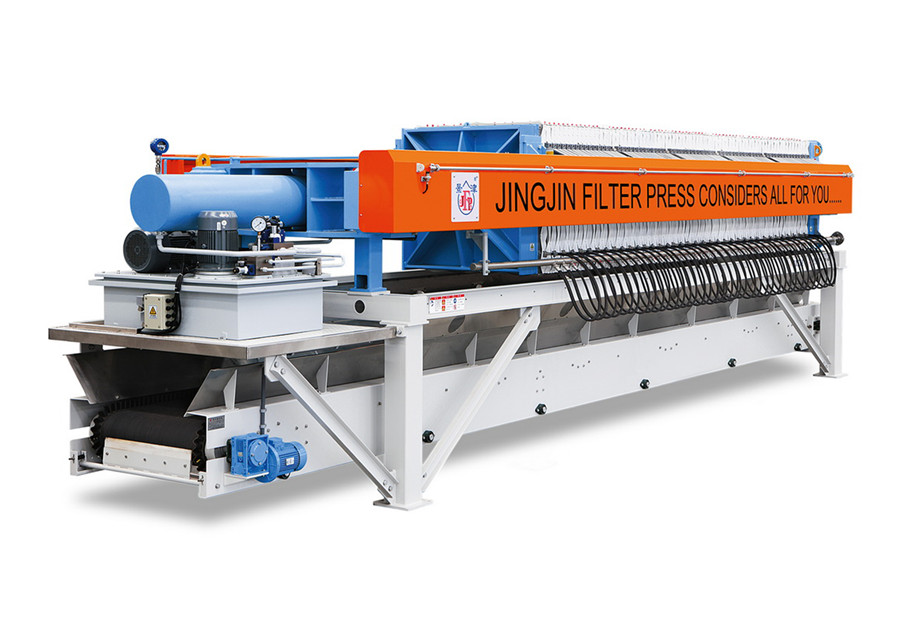Posts By Megan Johnston
How to Select Suitable Filter Cloth Specification for Clear Filtration
Many industrial processes rely on filter cloth specifications, such as those for filtering, separation, and purification. Choosing the right filter cloth specification is essential for effective filtering, and we’ll go over all the factors to consider in this post to help you make that decision.
A First Look at Filter Cloth Specifications
An essential part of many industrial filtering systems, filter cloth is defined by a set of specifications that outline its qualities and characteristics.
The efficiency and effectiveness of filter cloth, a porous material used to remove solid particles from liquids or gases, are greatly affected by its specification.

Filter Cloth Models
To cater to various business needs, filter cloth specifications come in a variety of styles. These are a few examples of the most typical filter cloth specifications:
-
Rating in microns: This indicates the size, in microns, of the filter cloth’s pores. More fine filtering is possible with smaller pores and a higher micron rating, which is used to determine the size of particles that can pass through the filter cloth.
-
Fabric: Filter cloth is available in several different materials, including cotton, nylon, and polyester. Every material has its own set of benefits and drawbacks; picking one over another is a matter of determining the precise field of use.
-
Filter cloth is named for the pattern created by weaving together the yarns. The porosity, strength, and longevity of the filter fabric are all influenced by the weave.
-
Another important factor that determines the filter cloth’s efficacy and longevity is its thickness. Although thinner filter cloths may be more suited for low-pressure applications, thicker cloths can endure higher pressures and offer superior filtration.
Factors to Consider When Choosing the Specification of Filter Cloth
Several things should be thought about while choosing the filter fabric specification for clean filtering. Among these factors are:
Region of use: The filter cloth specification needed is determined by the region of use. To maintain product quality and purity, certain industries, such as those dealing with food and drink, may need filter cloths with higher micron ratings.
Particulate matter: The filter cloth specification is influenced by the particle size. For instance, a filter cloth with a higher micron rating might be necessary to capture extremely tiny particles.
In addition to the filter cloth’s dimensions, the flow rate of the filtered gas or liquid is another important consideration. To make sure the filter cloth can handle the pressure, a thicker cloth might be needed for a higher flow rate.
Another factor that impacts filter cloth specifications is the pressure drop over it. If the pressure drop is high, then the filter fabric needs to be thicker to handle it.
You should also think about how much the filter cloth standard will cost. The available budget will determine the specification of the filter cloth, as the cost of different materials and weaves can vary.
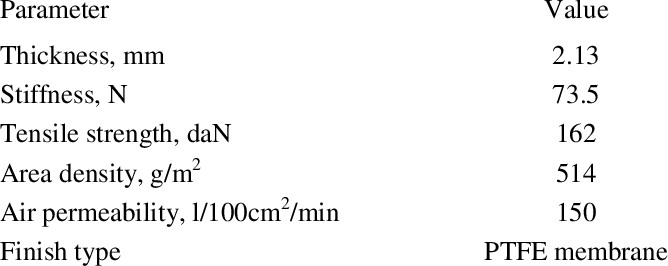
Pros of Using the Right Filter Cloth Specification
Several advantages can be achieved with the right filter cloth specification, such as:
-
Gaining the target degree of purity is easier with improved filtration efficiency, which can be accomplished with the right filter cloth specification.
-
Reducing the requirement for maintenance and downtime, increased productivity can be achieved with proper filter cloth specification.
-
Expense savings: By reducing waste and enhancing yields, the suitable filter cloth specification can help to save costs.
-
Higher-quality result: Accurate filter cloth specifications are a must for many industrial uses because they guarantee a high-quality result.
Finally, many industrial processes rely on filter cloth specifications, such as those for filtration, separation, and purification. Industrial processes can be made more efficient and of higher quality when operators have a firm grasp of the many filter cloth specifications and the many uses for each.
Enhanced filtration efficiency, higher productivity, reduced costs, and better product quality are just a few of the many advantages that can result from using filter cloths that are properly specified.
What is a Hydraulic Filter Press and How Does it Work?
A hydraulic filter press is a type of filter press that uses hydraulic pressure to separate solids from liquids. It is widely used in various industries such as chemical, petrochemical, pharmaceutical, and food and beverage.
How a Hydraulic Filter Press Works
A hydraulic filter press consists of a series of plates and frames that are alternately pressed together to form a chamber. The liquid to be filtered is pumped into the chamber, and the solids are trapped in the filter press.
The hydraulic pressure is then applied to the plates, which forces the liquid through the filter press, leaving the solids behind. The filtered liquid is then collected, and the solids are removed from the filter press.
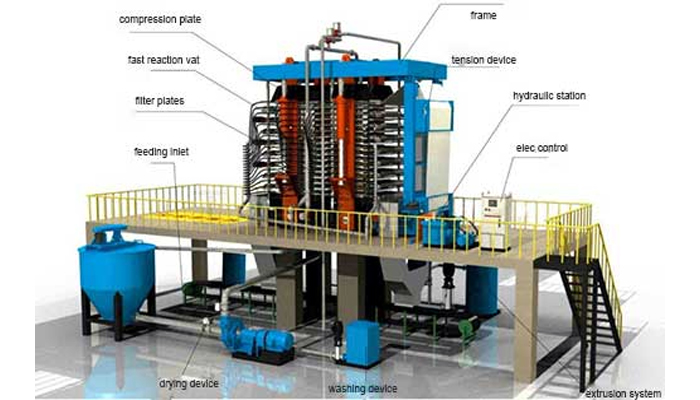
Advantages of Hydraulic Filter Press
The hydraulic filter press has several advantages over other types of filter presses. One of the main advantages is its high filtration efficiency.
The hydraulic pressure ensures that the liquid is forced through the filter press, leaving no room for impurities to pass through. This results in a higher quality of filtration, making it ideal for applications where high purity is required.
Another advantage of the hydraulic filter press is its versatility. It can be used to filter a wide range of liquids, from water to oil, and from chemicals to food and beverage. It is also easy to operate and maintain, making it a cost-effective solution for many industries.
Applications of Hydraulic Filter Press
The hydraulic filter press has a wide range of applications in various industries. In the chemical industry, it is used to filter chemicals and remove impurities. In the petrochemical industry, it is used to filter oil and remove impurities.
In the pharmaceutical industry, it is used to filter drugs and remove impurities. In the food and beverage industry, it is used to filter liquids and remove impurities, ensuring the quality of the final product.
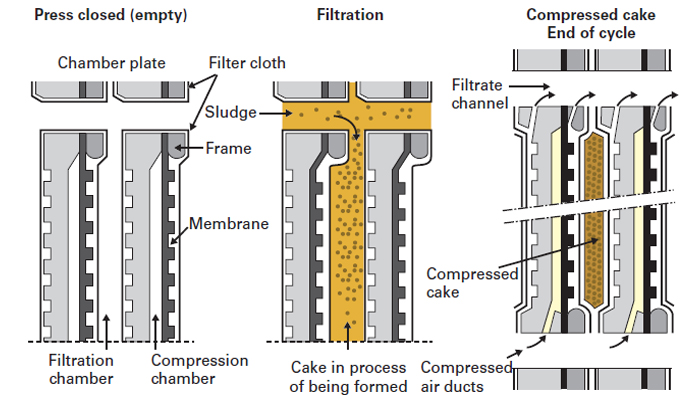
Benefits of Hydraulic Filter Press
The hydraulic filter press offers several benefits, including:
-
High filtration efficiency
-
Versatility in application
-
Easy to operate and maintain
-
Cost-effective solution
-
Ideal for applications where high purity is required
Conclusion
In conclusion, the hydraulic filter press is a highly efficient and versatile filter press that is widely used in various industries. Its high filtration efficiency, ease of operation, and cost-effectiveness make it an ideal solution for many applications.
Whether you are in the chemical, petrochemical, pharmaceutical, or food and beverage industry, the hydraulic filter press is an essential tool for ensuring the quality of your final product.
What are some unique or innovative applications for a 40W CO2 laser engraving machine in different industries or sectors?
A 40W CO2 laser engraving machine might be considered lower-powered compared to industrial-grade lasers, but its versatility allows for various innovative applications across diverse industries:
- Art and Craftsmanship: Artists and crafters use these machines for creating intricate designs on wood, acrylic, leather, and paper for art pieces, custom signage, jewelry, and personalized gifts.
- Small-Scale Manufacturing: Small businesses or startups utilize these machines for producing custom-branded products, such as promotional items, labels, and packaging, allowing for cost-effective customization.
- Prototyping and Design: Engineers and product designers use CO2 lasers for prototyping architectural models, signage, product packaging, or electronic casings, allowing rapid iteration and design validation.
- Education and STEM Learning: Educational institutions employ these machines to teach students about design, manufacturing, and technology. Students learn laser cutting and engraving principles by creating various projects.
- Fabric and Fashion: Textile artists and designers use CO2 lasers to engrave patterns, cut fabric for intricate designs, create unique textiles, or customize garments and accessories.
- Personalization Services: Engraving on personal items like phone cases, laptops, trophies, and accessories for personalization or commemoration purposes is a popular application.
- Medical and Scientific Tools: Researchers or medical professionals use CO2 lasers to create precision components for laboratory equipment, medical devices, or customized tools.
- Woodworking and Carpentry: Furniture makers, cabinetmakers, co2 laser engraving machine factory and artisans utilize CO2 lasers for precision engraving and cutting of wood inlays, decorative panels, and detailed designs for furniture.
- Electronics and PCB Manufacturing: CO2 lasers assist in prototyping and manufacturing printed circuit boards (PCBs), providing precise etching and cutting of electronic components.
- Hobbyist Communities: DIY enthusiasts and hobbyists explore diverse applications, from model making to creating personalized hobbyist tools, integrating laser engraving for customization.
The versatility and accessibility of a 40W CO2 laser engraving machine make it suitable for a wide range of innovative applications across industries, fostering creativity, customization, and small-scale production in various sectors.
What are the primary components of a 40W CO2 laser engraving machine, and how do they contribute to its functionality?
A 40W CO2 laser engraving machine consists of several key components, each playing a crucial role in its operation and functionality:
- Laser Tube: The laser tube is the core component that generates the laser beam. In a CO2 laser machine, it produces the high-energy beam used for engraving and cutting.
- Power Supply: This unit provides the necessary electrical power to the laser tube, regulating the voltage and current required for the laser’s operation.
- Laser Optics: Consisting of mirrors and lenses, the optics system directs and focuses the laser beam onto the material being processed. It ensures precision and control over the beam’s path and intensity.
- Controller/Driver: The machine’s controller or driver manages the movement of the laser head and coordinates the laser’s power and speed, interpreting commands from the design software to execute engraving and cutting tasks accurately.
- Cooling System: CO2 laser tubes generate significant heat during operation, necessitating a cooling system. Water or air-cooling systems help maintain the optimal temperature of the laser tube, preventing overheating and ensuring efficient operation.
- Exhaust System: As materials are engraved or cut, smoke, fumes, and debris are produced. An exhaust system removes these byproducts from the work area, ensuring a clean environment and preventing potential hazards.
- Work Bed: The work bed provides a stable surface for materials and supports them during engraving or cutting processes. Some beds are adjustable to accommodate various material thicknesses.
- Safety Features: These include emergency stop buttons, interlocks, and protective enclosures to prevent accidental exposure to the laser beam and ensure safe operation.
Each component in a 40W CO2 laser engraving machine contributes to its overall functionality, precision, and safety. The interplay between these components allows for controlled and accurate engraving or cutting processes on various materials while ensuring operator safety and machine longevity. Regular maintenance and proper calibration of these components are crucial for optimal performance and consistent results.
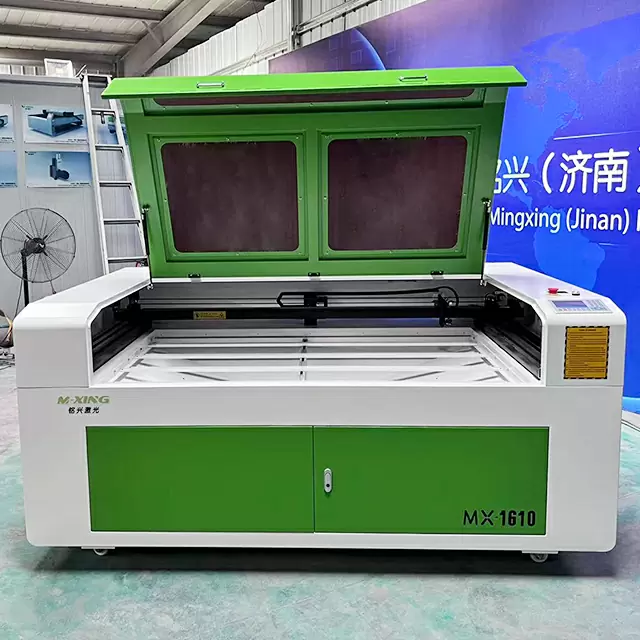
How does the cooling system impact the performance and longevity of a 40W CO2 laser machine?
The cooling system of a 40W CO2 laser machine plays a crucial role in maintaining optimal operating conditions for the laser tube, which directly impacts performance and longevity. Here’s how the cooling system affects the machine:
- Temperature Control: The laser tube generates significant heat during operation. The cooling system, typically using water or air, helps dissipate this heat to maintain a stable operating temperature. Proper temperature control ensures the laser tube functions efficiently and prevents overheating, which can damage the tube or degrade its performance.
- Tube Longevity: A well-maintained and properly cooled laser tube tends to have a longer lifespan. Consistent and adequate cooling helps prevent thermal stress and extends the operational life of the tube. Overheating can cause premature tube failure, reducing its lifespan and requiring more frequent replacements.
- Consistent Performance: Stable temperatures maintained by the cooling system contribute to consistent laser performance. Fluctuations in temperature can affect the laser’s power output and stability, leading to variations in engraving or cutting quality.
- Efficiency: An efficient cooling system ensures the laser tube operates at its optimal temperature, improving the overall efficiency of the machine. This efficiency translates to better engraving and cutting results while reducing the likelihood of downtime due to tube overheating or failures.
- Maintenance Requirements: Regular maintenance of the cooling system is essential to ensure its proper functioning. Cleaning filters, checking water levels, and monitoring for leaks or air bubbles in water-cooled systems are critical to avoid issues that could impact machine performance.
- Heat Dissipation: Efficient cooling systems prevent heat build-up not only in the laser tube but also in other critical components of the machine. This helps maintain the overall performance and longevity of various parts, including mirrors, lenses, and electronic components.
- Protective Measures: A well-designed cooling system with adequate safeguards protects the machine from damage caused by overheating. Automatic shut-off mechanisms or temperature sensors can prevent operation when the cooling system malfunctions, safeguarding the equipment.
In summary, the cooling system of a 40W CO2 laser machine directly influences the stability, efficiency, and lifespan of the laser tube and other critical components. Proper maintenance and attention to the cooling system contribute significantly to consistent performance and prolonged machine longevity.
What are the energy consumption and operating costs associated with using a 40W CO2 laser engraving machine?
The energy consumption and operating costs of a 40W CO2 laser engraving machine can vary based on several factors:
- Power Consumption: A 40W CO2 laser machine’s power rating indicates the maximum power it consumes during operation. However, the actual power consumption can fluctuate based on usage patterns, co2 laser engraving machine 40w settings, and the materials being processed. It’s generally more energy-efficient compared to higher-powered models, but the actual energy usage varies.
- Usage Time: The more frequently the machine is used and the longer the operational hours, the higher the energy consumption. Idle times between jobs also contribute to overall energy usage, so optimizing workflow and scheduling can impact operating costs.
- Material Efficiency: Different materials require varying amounts of laser power and time for engraving or cutting. Materials that require longer processing times or higher power settings will contribute more to energy costs.
- Cooling Systems: Some CO2 laser machines employ water-cooling systems, which add to overall energy consumption. Monitoring and maintaining these systems affect energy usage as well.
- Energy Efficiency Features: Some modern CO2 laser machines incorporate energy-saving features such as standby modes or automatic shut-off after periods of inactivity. These features can help reduce energy consumption during idle times.
- Location and Energy Rates: Energy costs can vary widely depending on geographic location and local energy rates. Higher energy rates will naturally result in higher operating costs for the machine.
Calculating the exact operating costs involves considering the machine’s power rating, the duration of operation, the specific settings used, and the energy rates in the locality.
As a general estimate, a 40W CO2 laser machine, being relatively lower in power, tends to have lower operating costs compared to higher-powered models. However, for accurate cost calculations, it’s essential to monitor the machine’s actual energy consumption over a period and factor in the local energy rates to determine the specific operating costs.
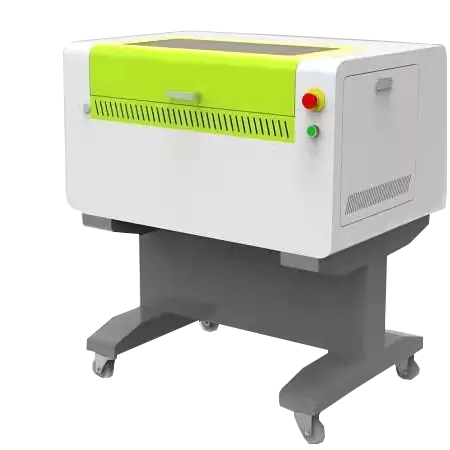
How does cloth filter work as a filter technology?
Cloth filters are a type of filter technology that uses a fabric or cloth-like material to remove impurities from a fluid or gas. The filter works by passing the fluid or gas through the cloth, which traps the impurities, allowing the clean fluid or gas to pass through.
How Does Cloth Filter Work As a Filter Technology
Water filter cloth is made up of a series of layers, each with its unique properties. The outer layer is typically a coarse mesh that traps larger impurities.
While the inner layers are finer meshes that trap smaller impurities. The layers are designed to work together to capture a wide range of impurities, from large particles to tiny microorganisms.
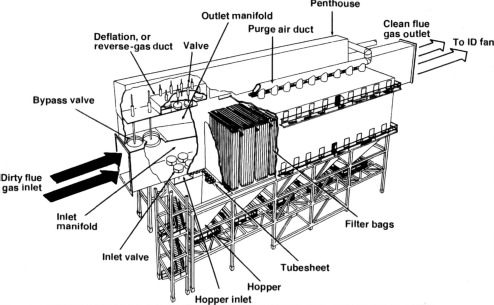
Advantages of Cloth Filters
Cloth filters have several advantages over other types of filters. They are relatively inexpensive, easy to install and maintain, and can be customized to fit specific applications. Cloth filters are also highly effective, with the ability to remove impurities as small as 0.1 microns.
Applications of Cloth Filters
Cloth filters are commonly used in a variety of applications, including:
-
Water treatment: Cloth filters are often used in water treatment plants to remove impurities from drinking water.
-
Industrial processes: Cloth filters are used in various industrial processes to remove impurities from fluids and gases.
-
Medical applications: Cloth filters are used in medical applications, such as in hospitals, to remove bacteria and other microorganisms from the air.
-
Food and beverage processing: Cloth filters are used in the food and beverage industry to remove impurities from liquids and gases.
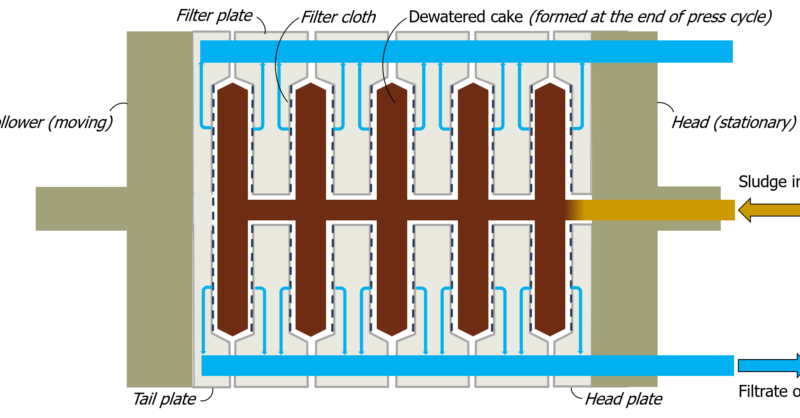
How to Choose the Right Cloth Filter
Choosing the right cloth filter depends on several factors, including the type of fluid or gas being filtered, the size of the impurities, and the desired level of filtration. It is important to consider the following factors when selecting a cloth filter:
-
Material: The material of the cloth filter should be compatible with the fluid or gas being filtered.
-
Mesh size: The mesh size of the cloth filter should be appropriate for the size of the impurities being removed.
-
Number of layers: The number of layers in the cloth filter should be determined by the level of filtration required.
-
Customization: Cloth filters can be customized to fit specific applications, so it is important to consider any specific requirements.
In conclusion, cloth filters are a highly effective and versatile filter technology that can be used in a variety of applications. By understanding how cloth filters work and the factors that influence their effectiveness, it is possible to choose the right cloth filter for a specific application.
Enhancing Filtration Efficiency with Quality Filter Press Cloths
Filter press cloths play a crucial role in optimizing filtration processes by effectively separating solids from liquids. This article provides valuable insights into the importance of filter press cloths, their benefits, and considerations for selecting high-quality cloths.
The Significance of Filter Press Cloths
Filter press cloths offer several benefits for efficient filtration:
-
Solid-Liquid Separation: Filter press cloths act as a barrier, allowing liquid to pass through while retaining solid particles, ensuring effective separation and efficient filtration.
-
Improved Filtration Efficiency: High-quality filter press cloths enhance filtration efficiency by providing uniform and controlled filtration rates, resulting in optimized throughput and reduced cycle times.
-
Enhanced Cake Release: The right selection of filter press cloths promotes easy cake release, preventing clogging and ensuring continuous operation.
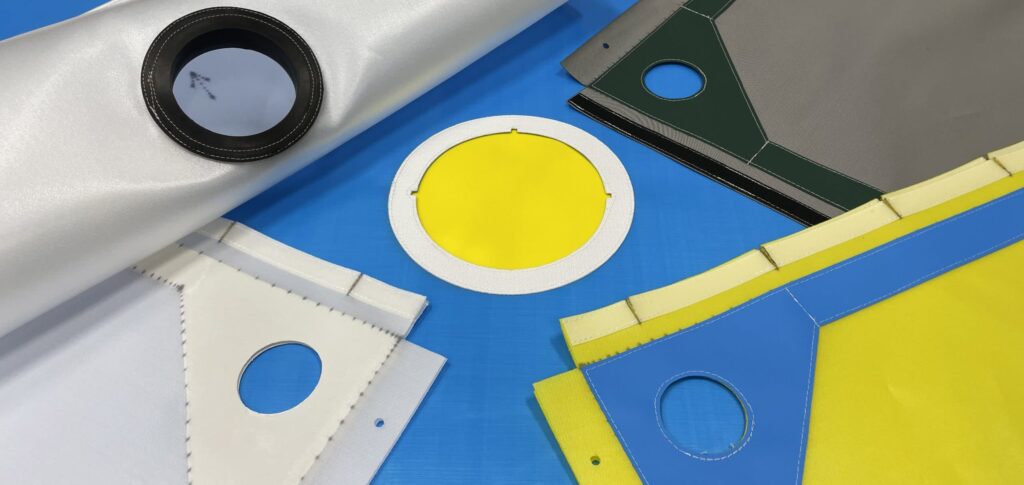
Selecting Quality Filter Press Clothes
Consider the following factors when choosing filter press cloths:
-
Material Composition: Select filter press cloths made from durable and chemically resistant materials, such as polypropylene, polyester, or nylon, based on the specific filtration application and the nature of the filtered substances.
-
Micron Rating: Determine the desired micron rating based on the size of the particles to be filtered. Different applications require varying levels of filtration precision.
-
Cloth Design and Weave: Evaluate the cloth design and weave pattern to ensure uniform and controlled filtration, preventing particle breakthroughs and promoting efficient cake formation.
Applications of Filter Press Cloths
Filter press cloths find extensive applications across various industries:
-
Chemical and Pharmaceutical: Filter press cloths are used in chemical and pharmaceutical manufacturing processes to separate solids from liquids, ensuring high product quality and purity.
-
Mining and Metallurgy: Cloths play a vital role in mining and metallurgical operations, facilitating the separation of valuable minerals from slurries.
-
Food and Beverage: Filter press cloths are utilized in the food and beverage industry to clarify liquids, remove impurities, and achieve desired product clarity.
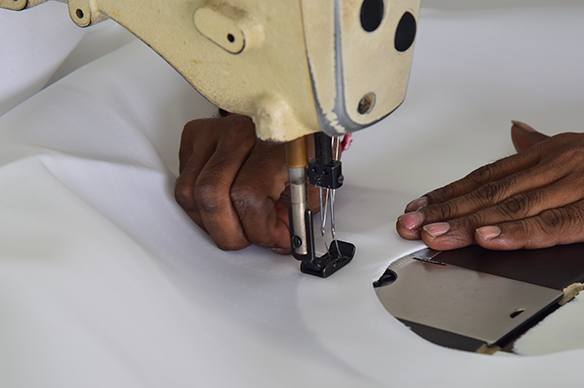
Example of Filter Press Cloths in Action
In a wastewater treatment plant, filter press cloths are employed to remove solid particles from sludge, ensuring cleaner water discharge. The cloths capture the solid debris, allowing for the separation of clean water, which can be recycled or safely released into the environment.
Conclusion
Filter press cloths are essential components in optimizing filtration processes, facilitating efficient solid-liquid separation. By selecting high-quality filter press cloths based on material composition, micron rating, and cloth design, industries can enhance filtration efficiency and achieve superior results.
From chemical and pharmaceutical manufacturing to mining and food processing, filter press cloths find applications in various industries, ensuring reliable and effective filtration.
Plate & Frame Filter Press: The Ultimate Guide
Plate and frame filter presses are a type of hydraulic press that uses a plate and frame system to apply pressure to the workpiece. They are commonly used in metalworking, automotive manufacturing, and other industries where high precision and force are required.
Benefits of Plate & Frame Filter Presses
1. High Precision
Plate and frame filter presses are capable of applying high levels of precision to the workpiece, making them ideal for applications where accuracy is critical.
2. High Force
These presses are capable of generating high levels of force, making them suitable for applications where a lot of pressure is required.
3. Versatility
Plate and frame filter presses can be used for a wide range of applications, including stamping, punching, and forming.
4. Low Maintenance
These presses are relatively easy to maintain and repair, making them a cost-effective option for companies looking to reduce downtime and increase efficiency.
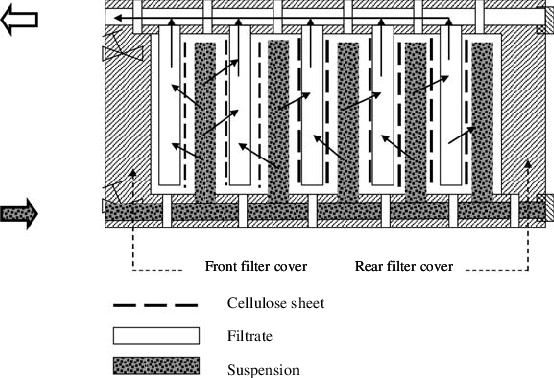
Drawbacks of Plate & Frame Filter Presses
1. High Capital Costs
Plate and frame filter presses are typically more expensive than other types of hydraulic presses, making them a significant investment for companies.
2. Complex Installation
These presses require specialized knowledge and expertise to install and maintain, which can be a challenge for some companies.
3. Limited Capacity
Plate and frame filter presses typically have limited capacity, making them unsuitable for applications where high production volumes are required.
Applications of Plate & Frame Filter Presses
1. Metalworking
Plate and frame filter presses are commonly used in metalworking applications, such as stamping, punching, and forming.
2. Automotive Manufacturing
These presses are also used in automotive manufacturing, where they are used to shape and form metal components.
3. Aerospace Industry
Plate and frame filter presses are used in the aerospace industry to shape and form lightweight metal components.
Maintenance Requirements for Plate & Frame Filter Presses
1. Regular Cleaning
It is essential to regularly clean the plate and frame filter press to remove debris and prevent damage.
2. Oil Changes
Regular oil changes are necessary to keep the press running smoothly and prevent wear and tear.
3. Leak Tests
Leak tests should be performed regularly to ensure that the press is functioning correctly and to identify any potential issues.
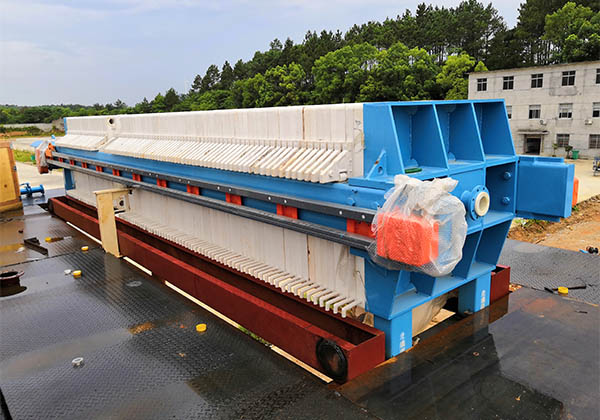
Conclusion
Plate and frame filter presses are highly precise and powerful tools that can be used in a variety of industries. While they come with some drawbacks, such as high capital costs and complex installation, they offer a range of benefits, including high force, versatility, and low maintenance.
By understanding the benefits and drawbacks of plate and frame filter presses, companies can make informed decisions about whether to invest in these presses for their specific needs.
Introduct JingJin Filter Press About Applications and Benefits
This article provides a comprehensive guide to the JingJin filter press, a highly efficient filtration system used in a wide range of industries. From understanding its working principle to exploring its applications and benefits, this guide covers everything you need to know about the JingJin filter press.
The Working Principle of JingJin Filter Press
JingJin filter press operates on the principle of pressure filtration. It consists of a series of filter plates and chambers that are tightly sealed. The slurry or liquid-solid mixture is pumped into the chambers, and pressure is applied to separate the solid particles from the liquid.
The filtered liquid, known as filtrate, flows through the filter cloth, while the solids are retained as a filter cake. The filter cake can then be discharged for further processing or disposal.
Applications of JingJin Filter Press
JingJin filter press finds applications in various industries, including:
-
Mining: In the mining industry, the JingJin filter press is used for dewatering mining concentrates, tailings, and other mining process slurries. It helps in recovering valuable minerals and reducing water content for efficient handling and disposal.
-
Chemical: JingJin filter press plays a vital role in the chemical industry to separate solids from liquids, such as in chemical processing, pigment production, and pharmaceutical manufacturing. It ensures product purity, reduces waste, and facilitates the recycling of valuable materials.
-
Wastewater Treatment: The JingJin filter press is widely used in wastewater treatment plants to dewater sludge and remove solid particles from the effluent. It helps in reducing the volume of waste and meeting regulatory requirements for water discharge.
Benefits of JingJin Filter Press
JingJin filter press offers several benefits in filtration processes:
-
Efficient Solid-Liquid Separation: With its high-pressure filtration capability, the JingJin filter press ensures efficient separation of solid particles from the liquid phase.
-
Reduced Moisture Content: By effectively removing water from slurry or sludge, the JingJin filter press reduces moisture content, resulting in cost savings in transportation and disposal.
-
Improved Product Quality: JingJin filter press helps in achieving higher product purity by effectively removing impurities and contaminants from liquids.
-
Environmental Sustainability: By reducing waste volume and facilitating the recycling of valuable materials, the JingJin filter press promotes environmental sustainability.
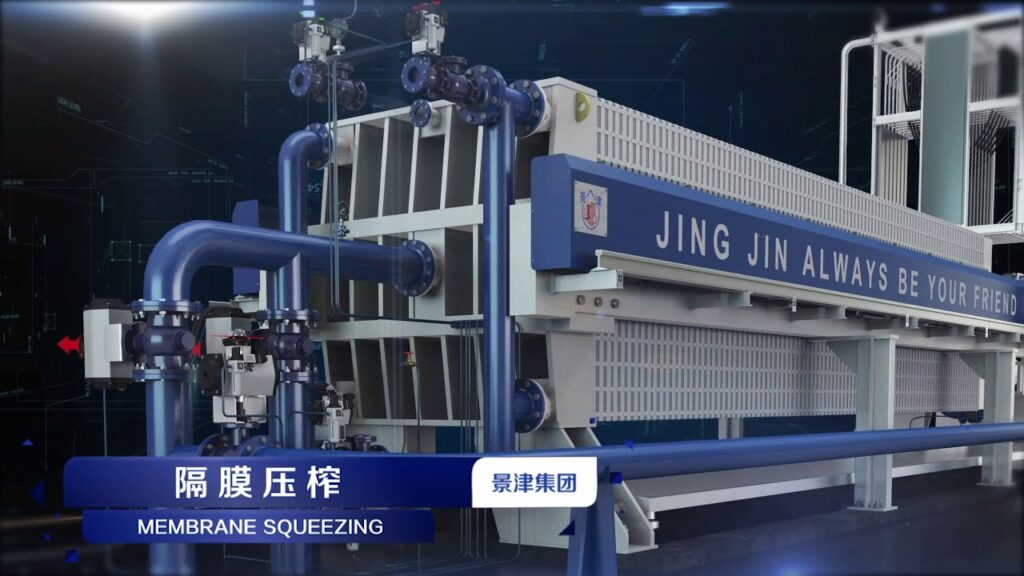
Conclusion
JingJin filter press is a reliable and efficient filtration system that finds applications in various industries. Its working principle, applications, and benefits make it an essential tool for solid-liquid separation processes.
Whether you are in the mining, chemical, or wastewater treatment industry, understanding the capabilities of the JingJin filter press can greatly enhance your filtration processes, leading to improved product quality, cost savings, and environmental sustainability.
Enhance Your Food Industry Operations with a Wholesale Food Filter Press
This article serves as a comprehensive guide to wholesale food filter presses, essential equipment for optimizing food industry operations. Discover the benefits, applications, and considerations of using a wholesale food filter press in your food production or processing facility.
Introduction
In the food industry, maintaining product quality and meeting stringent regulatory standards are crucial. A wholesale food filter press is a powerful piece of equipment that plays a significant role in optimizing food production and processing operations.
This article explores the features, applications, and key considerations of using a wholesale food filter press in the food industry.
Benefits of a Wholesale Food Filter Press
A wholesale food filter press offers various advantages in food processing. It efficiently separates solids from liquids, ensuring the production of clarified juices, oils, and beverages.
This equipment helps improve product quality, extends shelf life, and enhances flavor profiles. Additionally, a wholesale food filter press reduces processing time, increases production efficiency, and ensures compliance with food safety regulations.
Applications of a Wholesale Food Filter Press
A wholesale food filter press finds applications in diverse areas of the food industry. It is commonly used for juice extraction, oil filtration, syrup clarification, and the production of alcoholic beverages.
This equipment effectively removes impurities, such as fruit pulp, sediments, and suspended solids, resulting in clear and visually appealing food products.
Considerations for Using a Wholesale Food Filter Press
When selecting and utilizing a wholesale food filter press, several considerations should be taken into account. These include the capacity and size of the equipment, the material compatibility with food products, and the ease of maintenance and cleaning.
It is crucial to choose a reputable supplier that offers reliable after-sales support and can provide customized solutions to meet specific food industry requirements.
Example Scenario
For example, in a juice production facility, a wholesale food filter press enables efficient extraction of clarified juice from fruits, removing pulp and solids. This equipment ensures the production of high-quality juices with improved clarity, taste, and nutritional value.
Additionally, by implementing a wholesale food filter press, the facility can streamline operations, minimize wastage, and meet the demands of a competitive market.
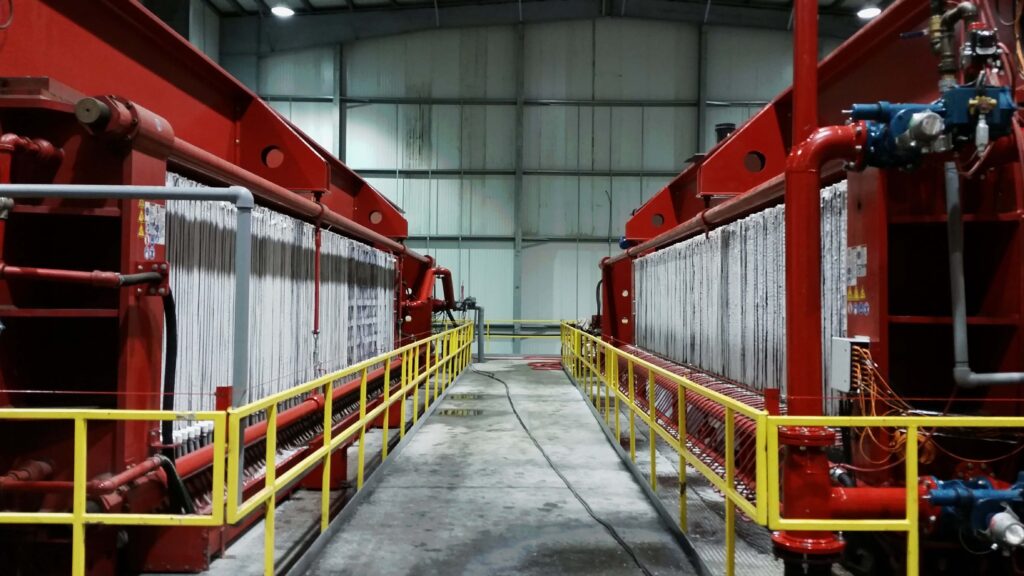
Conclusion
In conclusion, a wholesale food filter press is a valuable asset for food industry operations, enabling efficient separation of solids from liquids and ensuring high-quality food products.
By understanding the benefits, applications, and considerations of using a wholesale food filter press, food industry professionals can enhance their production processes, maintain product integrity, and meet regulatory requirements.
When selecting a wholesale food filter press, conduct thorough research and consider factors such as equipment capacity, compatibility with food products, and supplier reputation.
Collaborating with experienced industry professionals and equipment suppliers can provide valuable insights and ensure the successful integration of a wholesale food filter press into your food production or processing facility.
Efficient Filtration: Plate and Frame Filter for Optimal Results
Discover the benefits of using a plate and frame filter for efficient filtration processes. This article highlights the advantages of plate and frame filters, including their versatility, high filtration capacity, and ease of maintenance.
Versatile Filtration Solution
Plate and frame filters offer a versatile solution for a wide range of industries and applications. Whether it’s removing impurities, clarifying liquids, or separating solids, these filters provide efficient filtration capabilities.
The design of plate and frame filters allows for customization, accommodating different filter media and sizes to suit specific filtration requirements. From pharmaceutical formulations to wine clarification, plate and frame filters deliver reliable and precise filtration results.
High Filtration Capacity
Plate and frame filters are known for their high filtration capacity. The arrangement of multiple plates in a frame creates a large filtration surface area, enabling efficient filtration of large volumes of liquid.
This increased capacity reduces filtration time and improves overall productivity. Whether you’re dealing with industrial-scale filtration processes or small-batch productions, plate and frame filters offer the capacity needed to handle the demands of your operations.
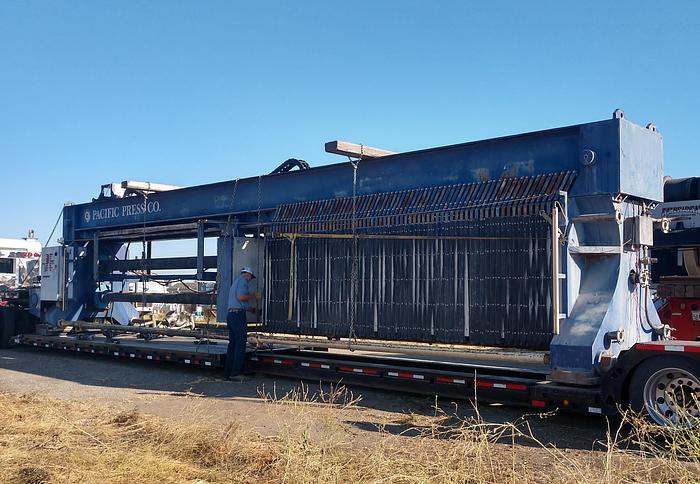
Easy Maintenance and Cleaning
Plate and frame filters are designed for easy maintenance and cleaning. The filter plates and frames can be easily disassembled, allowing for thorough cleaning and inspection.
The accessibility of the filter media simplifies replacement and ensures consistent filtration performance. With their user-friendly design, plate and frame filters minimize downtime during maintenance, maximizing operational efficiency and reducing costs associated with filter maintenance.
Precise Filtration Control
Plate and frame filters provide precise filtration control, allowing operators to adjust parameters such as pressure, flow rate, and filter media for optimal results. This control enables fine-tuning of the filtration process, ensuring the desired level of clarity and purity in the filtrate.
Whether it’s achieving specific particle size distribution or meeting stringent quality standards, plate and frame filters offer the flexibility and control needed to achieve precise filtration outcomes.
Example: Pharmaceutical Industry
In the pharmaceutical industry, plate and frame filters are widely used for the purification of active pharmaceutical ingredients (APIs) and the removal of impurities from drug formulations. These filters ensure the production of high-quality pharmaceutical products by effectively separating solids and contaminants.
From large-scale pharmaceutical manufacturing plants to research and development laboratories, plate and frame filters play a crucial role in maintaining product integrity and meeting regulatory requirements.
